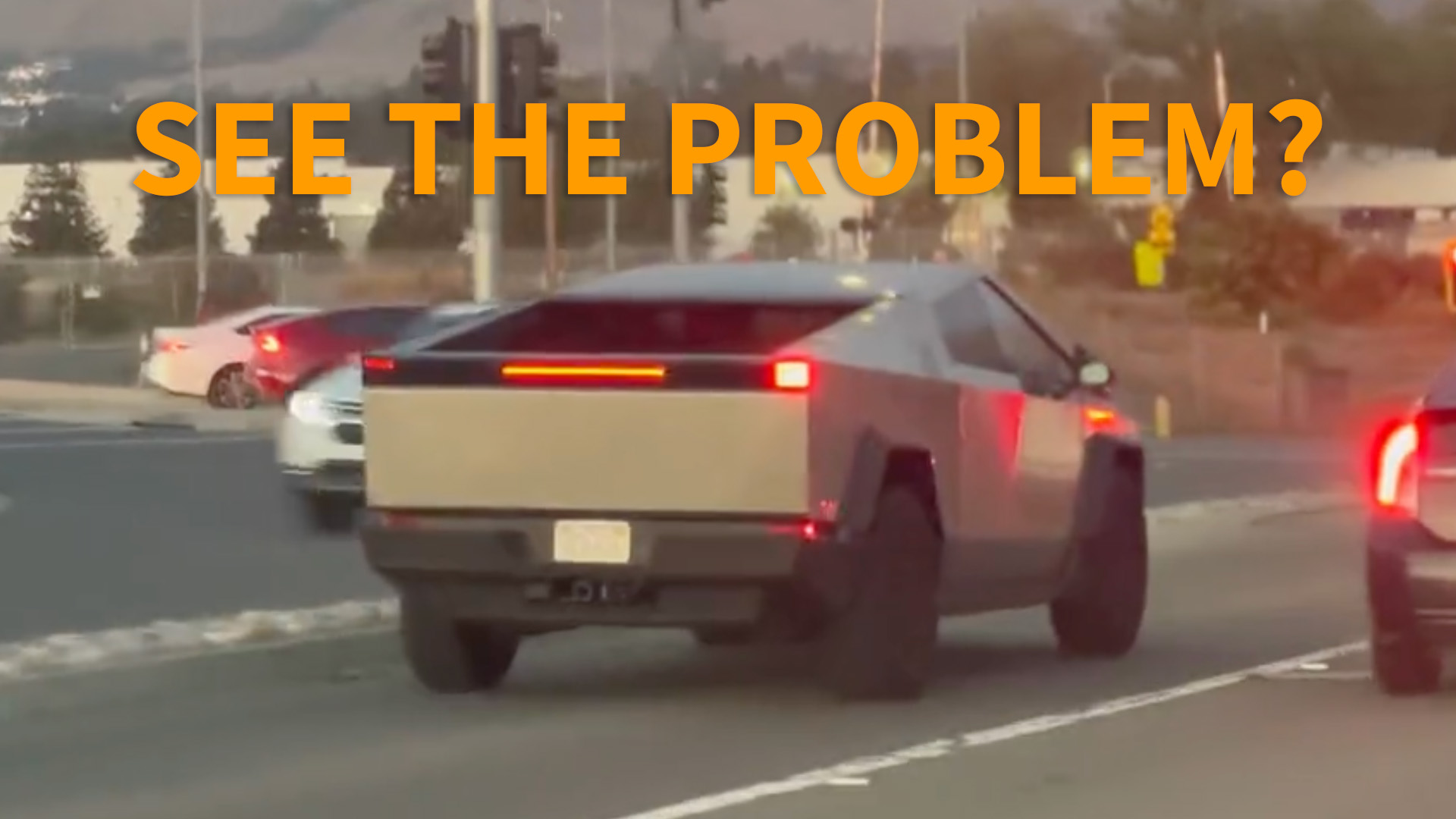

As the Tesla Cybertruck nears its planned launch date of November 30, sightings of pre-production vehicles out testing on the road are giving us a better idea of what to expect of the pickup’s final form. The more we see of it though, the more we’re left scratching our heads, and we may have yet more confusion in store if the brake lights go unchanged from their design on pre-pro trucks.
In a video posted to Twitter, a pre-production Cybertruck approaches a red light in the turning lane, slowing as it does, with its left signal on. The driver steps on its brake, activating the brake light, whose design caught my eye.
In normal operation, the Cybertruck’s taillights consist of a single lateral element across the full width of the vehicle. When the driver brakes, though, the main taillight on the tailgate deactivates, and is replaced by a shorter light just beneath it. The corner lights fill in to form squares, which appear to double as turn signals as they blink amber.
The issue here is that less of the Cybertruck’s rear lighting is solely dedicated to brake lights than to the taillights or turn signals, the former of which deactivate during braking. Although the lights at the edges become more intense under braking, their small surface area means that overall, the Cybertruck emits less light when it’s slowing down. That’s pretty much the inverse of what drivers have come to expect. This could lead to drivers of following vehicles becoming confused, assuming a Cybertruck is coasting or accelerating when it’s braking, and vice versa. Best case scenario, the result is traffic flow problems; worst, rear-end collision.
The Federal Motor Vehicle Safety Standards regulate taillight design, mandating minimum area, placement, quantity, and visibility according to vehicle category, dimensions, and weight. However, the FMVSS does not appear to prohibit deactivating taillights during braking, so the Cybertruck’s taillights as seen here seem to be legal—even if they are perplexing, and potentially dangerous.

Of course, the risk of a rear-ending would be easy to negate: Tesla could just leave the main tailgate light lit while braking, as Rivian does on the R1T and R1S. But the Cybertruck has been designed under Tesla CEO Elon Musk’s strict brief that the vehicle should “look like the future,” which may limit designers’ say in enacting such a change. The designers seem to have already been overruled after conceiving an alternate Cybertruck according to Yahoo! Finance, one that Musk presumably shot down.
Now, the Cybertruck’s design is causing Tesla problems, with Musk saying last week that production has been challenging, and that his favored design “dug” Tesla’s “grave.” Musk previously took fault for the Model X’s overcomplicated, troublesome “falcon wing” doors, as reported by Car & Driver.
Musk’s vision is often both Tesla’s greatest asset and its liability, appealing to diehards but increasingly repelling the general public. The Cybertruck looks like it’ll be the next chapter in that narrative, regardless of whether its taillights improve by the time delivery day comes around.
Got a tip or question for the author? You can reach them here: james@thedrive.com